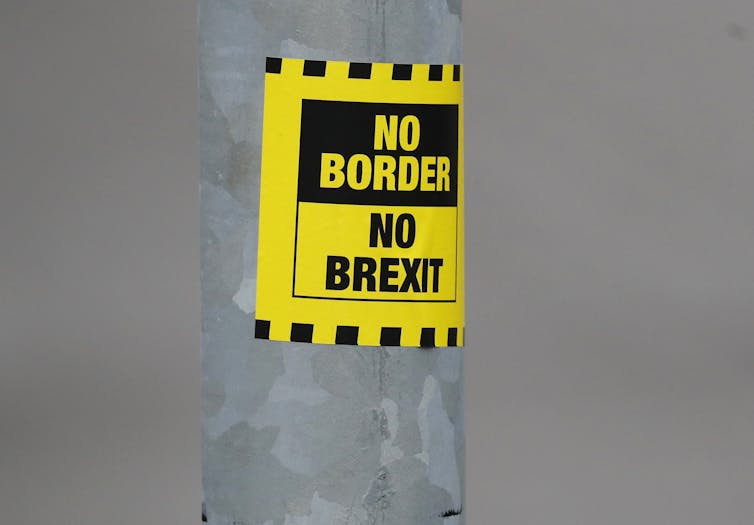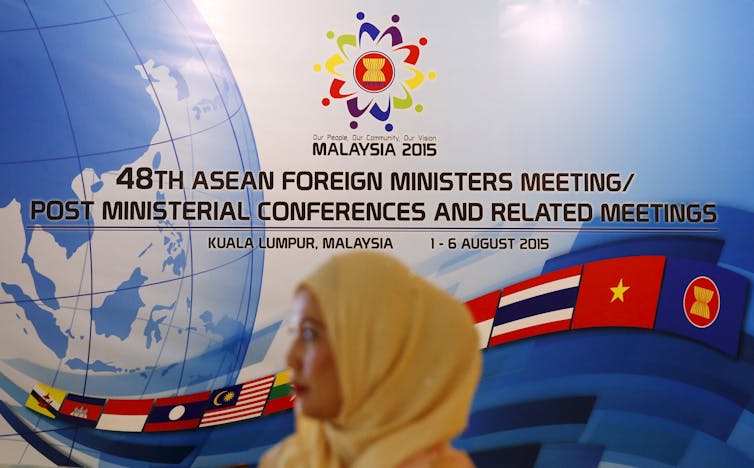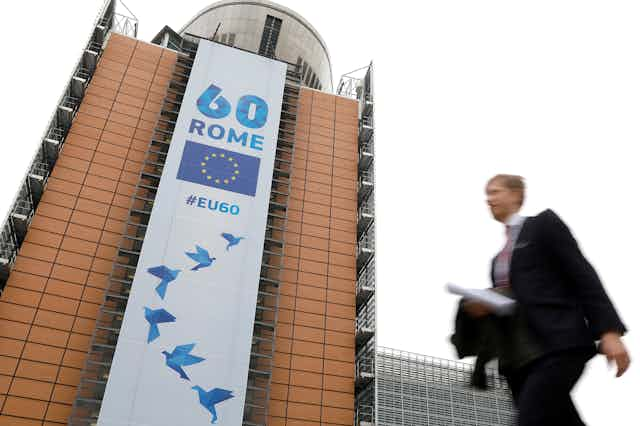On 25 March 2017, the European Union’s heads of state and government will meet in Rome to celebrate the 60th anniversary of the European project. The date marks the signing of the Treaties of Rome, which established the foundations of European Community that preceded the EU.
While the EU is a unique experiment in integration in many ways, the world abounds in other kinds of regional trade agreements; the World Trade Organization records more than 635. Still, as the most advanced form of market integration in the world, the EU provides a good model for other regions, including Asia.
Why the EU is a good model
Market integration is one of the tools that helped take Europe out of the ashes of the world wars and supported its transition out of the Cold War into peace. It provided a historically fragmented, war-torn, extremely diverse continent with a period of geopolitical stability, and thus brought wealth and prosperity.
Despite Britain’s impending exit from the group, the EU remains the most advanced and successful model for peace through economics in Europe’s history. The bloc continues to attract neighbouring countries, having expanded from the original group of six to the current 28, with a combined population of more than 500 million and GDP of more than €14 billion. These countries work together across a single market and carefully selected common policy areas.
The EU’s market integration began with the free circulation of goods, based on the logic that the more states trade with one another and become interdependent, the less they are likely to go to war. It has extended to the free movement of people (stimulating travel, work abroad and cultural exchange), and enhanced economic integration through freer movement of capital and services, the option of joining a common currency, and other joint initiatives and policies.
Later members joined for mainly economic reasons; many others to fill the geopolitical void left by the collapse of the Soviet Union and its regime transition. Central and Eastern European countries, for instance, were supported in their transition to market economy and democracy by joining the EU and various other international institutions.

All signed up to trade with each other, but also to promote shared values of freedom, democracy, human rights, peace, solidarity, strength through diversity and the rule of law. But increasingly negative attitudes towards the EU in some member states, and the EU’s struggle with confidence in its achievements and its future potential is a sign this stability came at the price of dynamic decision-making.
Integration in Asia
Asia is home to more than half of the world’s population and to most of the world’s production. These make it one of the most dynamic regions in the world, with huge economic potential.
Just as for the EU and its members, some countries in the region feel a certain frustration with the lack of progress by the World Trade Organization in dealing with the most urgent economic issues. While this may make regional integration à la EU seem desirable, the scope to achieve similar outcomes in Asia is shaky.
National contexts and ideologies in the region differ as much as economic structures, institutional differences, geopolitical, cultural and historic conditions. The motivation in Asia to work towards greater integration is often subject to the economies’ interdependence through trade and production networks within the global value chain, and is often commercially driven.
Nonetheless, Asia has numerous geo-economic groupings that may lead to EU-like integration including the East Asia Free Trade Agreement (EAFTA), the Comprehensive Economic Partnership in East Asia (CEPEA) and the Association of Southeast Asian Nations (ASEAN). These already make it the world’s second-most integrated region after the EU.
ASEAN also has a network of additional free trade agreements with neighbouring countries, such as those between Australia and New Zealand (AANZFTA, China (ACFTA), South Korea (AKFTA), India (AIFTA) and a Comprehensive Economic Partnership with Japan (AJCEP).
Then there is ASEAN+3 – China, Japan, and South Korea, which has an ambitious Master Plan on ASEAN Connectivity, which aims to expand sectors and topics of interaction by 2025.
Countries in the area are also working towards the establishment of a Regional Comprehensive Economic Partnership (RCEP) as an alternative to Trans Pacific Partnership, which has been rejected by US President Donald Trump.

The scene for further economic integration across Asia is clearly set. The RCEP would be a good start, providing the basis for economic cooperation, poverty alleviation, facilitation of trade in products and services and more.
Hurdles for further integration
But significant hurdles would need to be overcome if this project were to succeed along similar lines to the long-term achievements of the EU.
The first involves the question of will for unity in diversity, an idea that guides the EU. The region’s cultures, political regimes, economic systems and religious beliefs are more disparate than Europe. And we can count on many governments resisting sufficient institutional proximity, which would necessarily result in some diluting of sovereignty, non-interference and territorial integrity.
The second hurdle entails superpower interests in seeing such integration take place – or not – and in what shape. Asia remains under the influence of fiercely competing superpowers, buffeted by the conflicting interests of China, the United States and Russia. What are the chances the region can achieve equal partnership rather than extending the predominance of major regional actors; of reaching partnership rather than absorption?
There is no power balance between states in Asia as exists in Europe with Germany and France. These countries share a strong belief in European integration, and social and cultural understanding. What would be the parallel historical, ideological and social drivers in Asia? What or who would hold Asian integration together in times of crisis, something the more consolidated and stable EU is currently struggling with?
If Asia could integrate in its own way – most likely much more loosely than the EU and with fewer joint institutions and policies – then the formidable growth potential of the region could become a great driving force for dealing with the biggest challenges of today and tomorrow. These include national security, migration, competition and the re-emergence of protectionism, automation and unemployment, and ageing work forces.
Working together to solve these complex challenges would make them much easier to deal with.
In December 2016, the EU and ASEAN celebrated the 40th anniversary of their relationship. As a summary to their underlying beliefs, they stated that “regional integration (is) the most effective way to foster stability, build prosperity and address global challenges.”
Each needs to promote this in its own setting to succeed.

